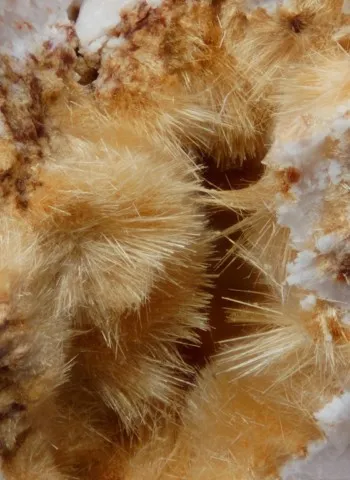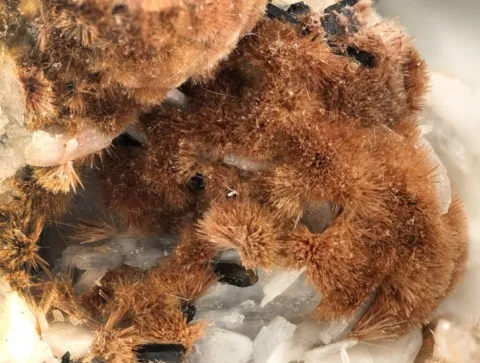RAITE
Class : Silicates
Subclass : Phyllosilicates
Crystal system : Orthorhombic
Chemistry : Na3Mn3Ti0.25Si8O20(OH)2 10H2O
Rarity : Very rare
Raite is a very rare silicate of nepheline syenites and their pegmatites. This mineral was named to honor the international team of scientists (led by Thor Heyerdahl) who armed the papyrus sailing ship Ra and made a trip aboard it in 1970. Raite forms small acicular crystals of 2 mm, frequently united in radiate aggregates, light brown in color, sometimes pink to pinkish-brown or yellow to golden brown.
Main photo : Raite from Yubileinaya pegmatite, Karnasurt Mountain, Russia © OT. Ljøstad
Raite in the World
Raite is not present in the French underground.
Twinning
No twin known for this mineral species.
Fakes and treatments
No fakes listed for this mineral species.
Hardness : 3
Density : 2.32 to 2.39
Fracture : Undetermined
Streak : Yellow
TP : Transparent
RI : 1.540 to 1.550
Birefringence : 0.010
Optical character : Biaxial +
Pleochroism : Visible
Fluorescence : None
Solubility : -
Magnetism : NoneRadioactivity : None


